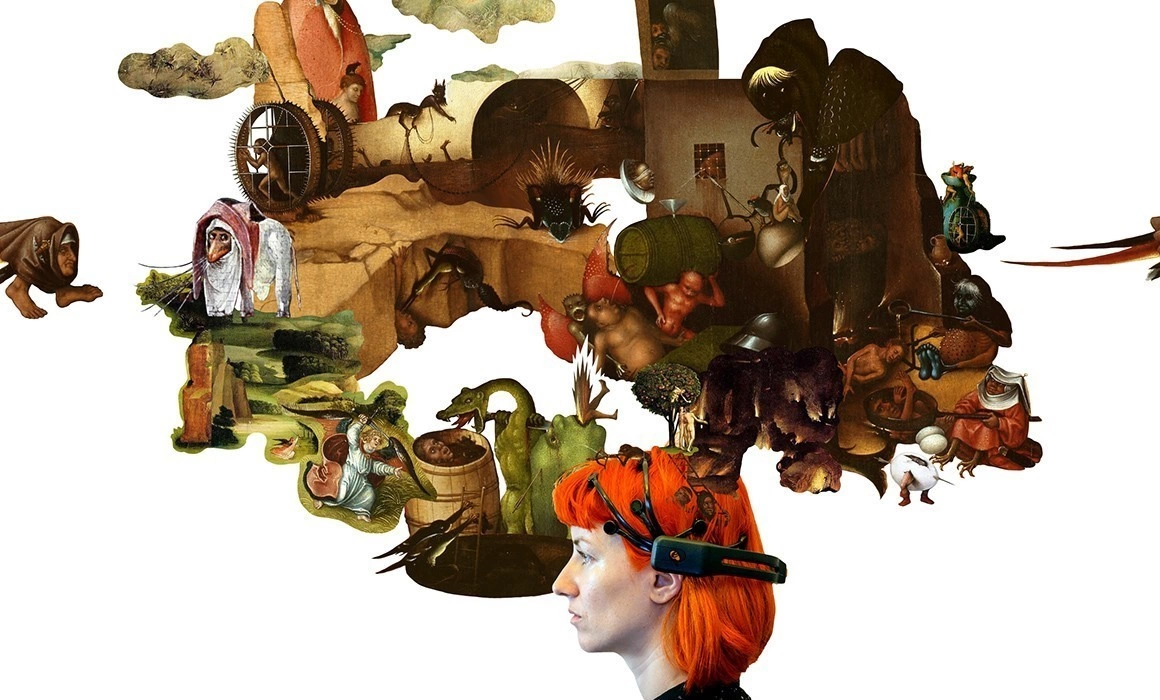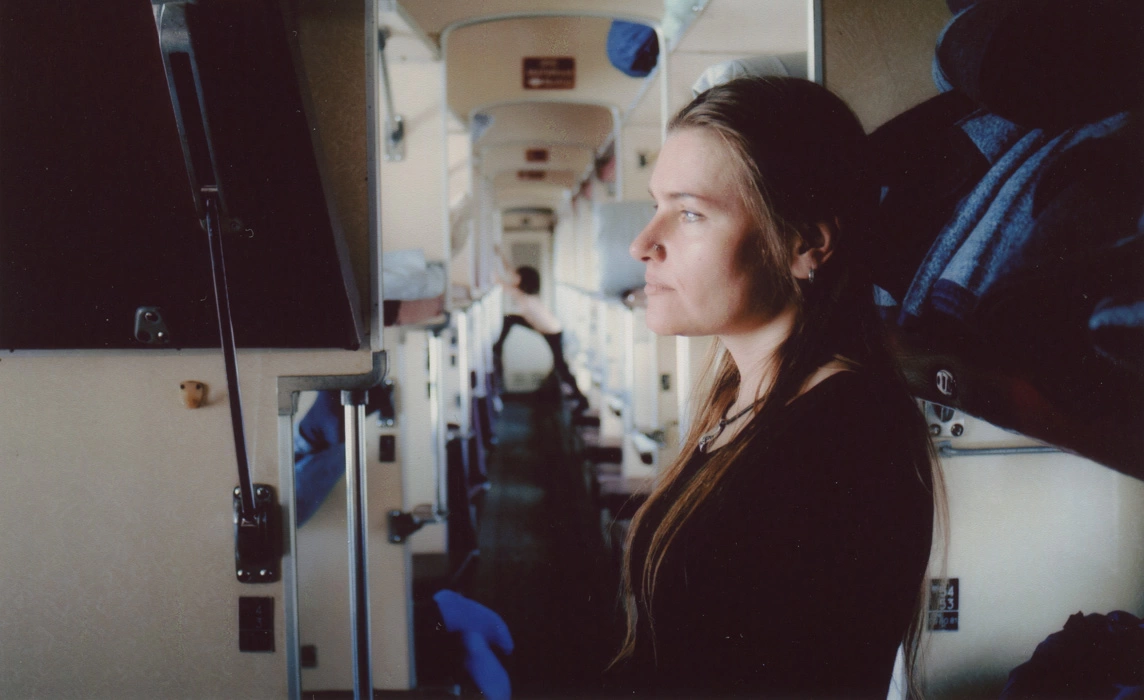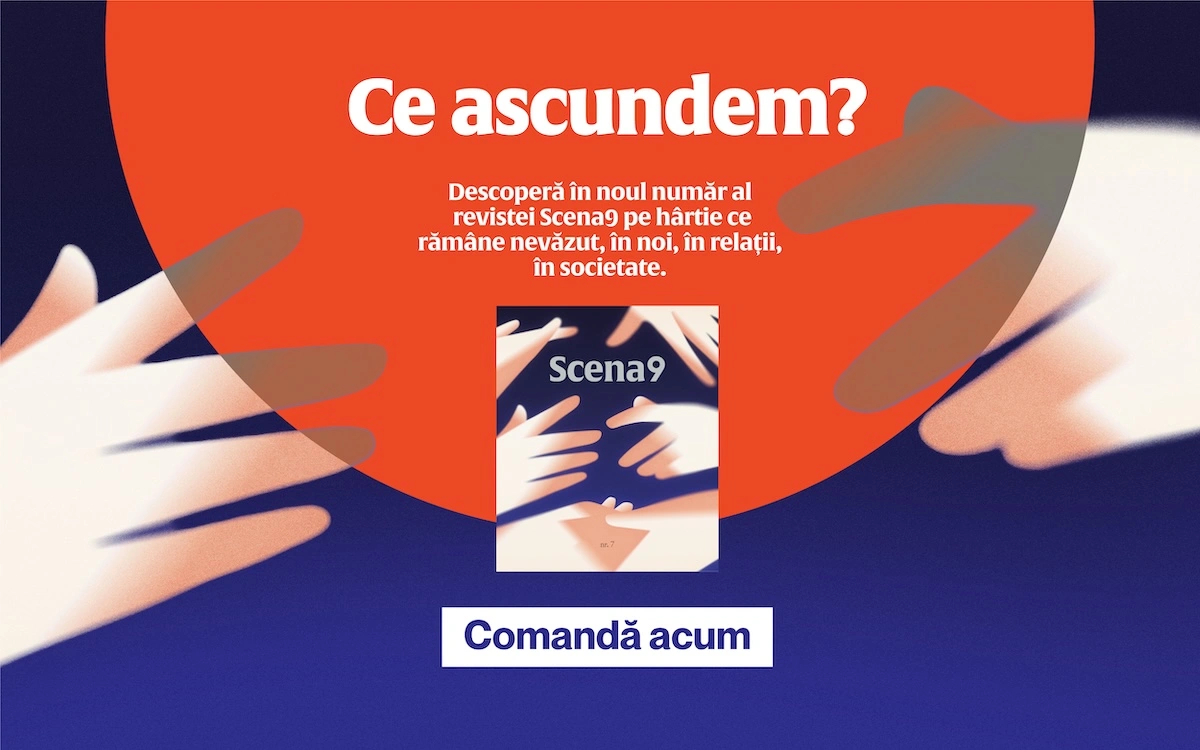I tried to find out what happens in my brain when I look at a painting. This is why I visited a neuromarketing lab, talked to a researcher in neurosciences about art’s effects on the heart, visited the National Museum of Art while connected to an encephalographic headset and went to the Polytechnic University of Bucharest, where artificial intelligence is trained to recognize art movements.
Has a painting ever made you cry?
For several days, I could see the sun more in paintings hung up in museums than on the sky. I fought my way through a crowd armed with selfie sticks which was guarding Rembrandt’s Night Watch and I was standing on my toes in order to see Vermeer’s Milkmaid. However, no sign of revelation. Like every modest tourist, for whom a ticket at a famous art museum is a portal to a world where everything must be seen, I shortly felt exhausted. And then it happened: I realized I was crying in front of a painting that I have fallen in love with seeing it in books and jpgs. Discretely and uneasy, among groups of tourists, I wiped my tears in order to replace them with a cartoonish grin. Although it came after an intensive art regime, it was there, at theFlemish Art Museum from Bruges, that I was for the first time moved by a painting before analyzing and storing it in the knowledge vault every respectable intellectual builds. Five hundred years ago, Hieronymus Bosch painted The Last Judgment, an insane carnival; with the same colors he imbued his paintings with the substance nightmares are made of and, in the same time, with hope’s raw material.
I bought a postcard with some of the painting’s details – some devilish creatures pushing over a black water, out of which orphaned hands, heads and legs surface from, a ship in the shape of a slipper, where two naked and crooked people hide. I went out and for a couple of hours I had the impression that I came back in a different period, where time was slowed down by the thought that these paintings were a message that have floated hundreds of years in a bottle. This bottle was thrown into the world at a time when painters were struggling for days in a row for a portrait and it ended up in a world where, every two minutes, there are more photos taken than have existed in the whole world 150 years ago. Later, I found out that many people start crying in front of certain paintings and that most of the times time is crucial in this respect:
“The results of my questionnaires show that time is one of the main reasons people cry when they see certain paintings. Some are just swept off their feet to see that, after many years they haven’t been in a museum, the same paintings are in the same places. This made my respondents think about their lives and how they imperceptibly go by. Someone told me how he realized that the painting he was watching will be in the same place even after he will die. It was a truly depressing or sad thought.”
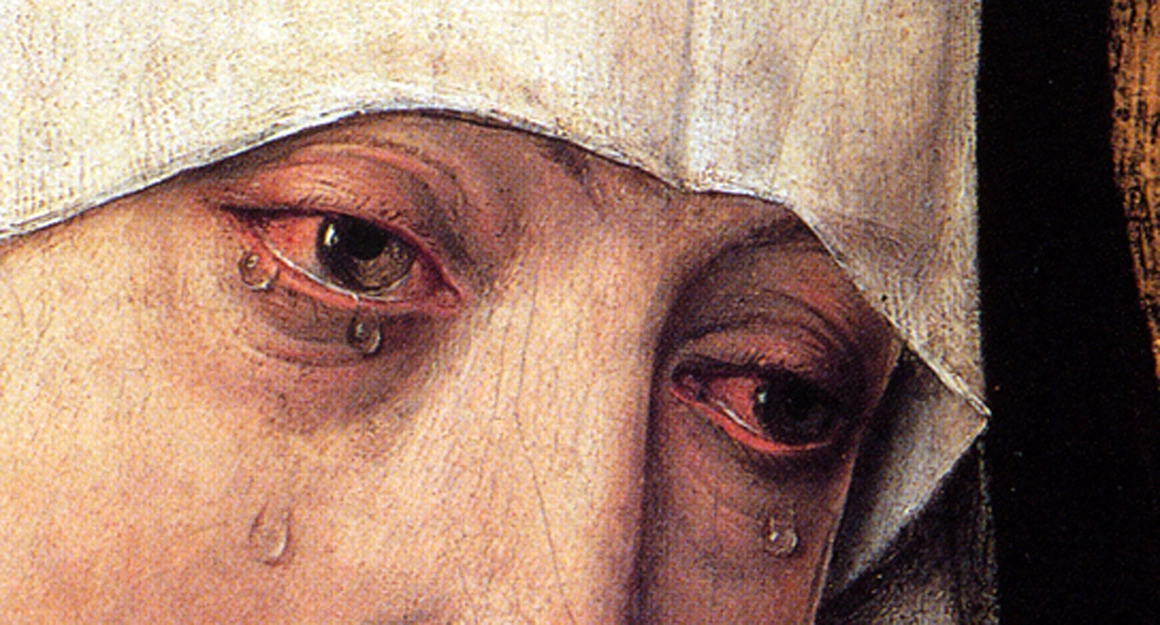
James Elkins, professor of art history at the School of the Art Institute of Chicago, started questioning people in order to find out what makes them cry in front of some artworks. I received his book from my friend who accompanied me to Bruges and who, after seeing my red eyes, concluded “Well, you have the Stendhal Syndrome!”. This is how an Italian psychologist called the behavior many tourists manifested while visiting the masterpieces of Florence. Some would have their blood pressures up, some would cry their eyes out when laying their eyes on Boticelli, Titzian or DaVinci at the Uffizi gallery, some would pass out or start hallucinating in a psychotic manner. In her room, at Santa Maria Nuova Hosiptal, Graziella Magherini claims to have treated over a hundred such cases, where the clash with art provoked extremely intense emotional outbursts. In `89, Magherini published a book about the “Stendhal Syndrome” named after the writer who was the first to recount his experiences when he saw some of Florence’s most famous masterpieces. Some say that this syndrome is made up and happily my mini-outburst of crying wasn’t followed by an emotional thunder (maybe because the Flemish angels are more prudent with those faint-hearted or maybe because I had a glass of wine immediately after). However, the curiosity that killed the cat made me inquire about the effects art has on us, the animals that fill up galleries, museums and that never tire to write about them. I embarked on a search for this answer and I started with the brain.
Painting as fuel for neurons
When I arrived the the BuyerBrain headquarters, an old building located among hip coffee-shops in one of Bucharest’s neighborhoods, my mind was oscillating between amusement and unease. They would put me through an encephalographic test while I was watching on a computer screen several works belonging to Romanian artists, in the attempt of finding out what kind of activity is taking place in my brain while seeing them and which one among these works has the most powerful effect. What if while I strongly claim that I like some of the painting of contemporary Romanian artists like Roman Tolici or Serban Savu, the spikes on the screen will give it away, showing that I have a blind passion for Sabin Balasa? I felt a little bit exposed knowing that a software will have access to what is happening in my brain, even if for just one fraction of a second. It felt as if there, in my black box, resides a deeper truth than what I express through words and reactions.
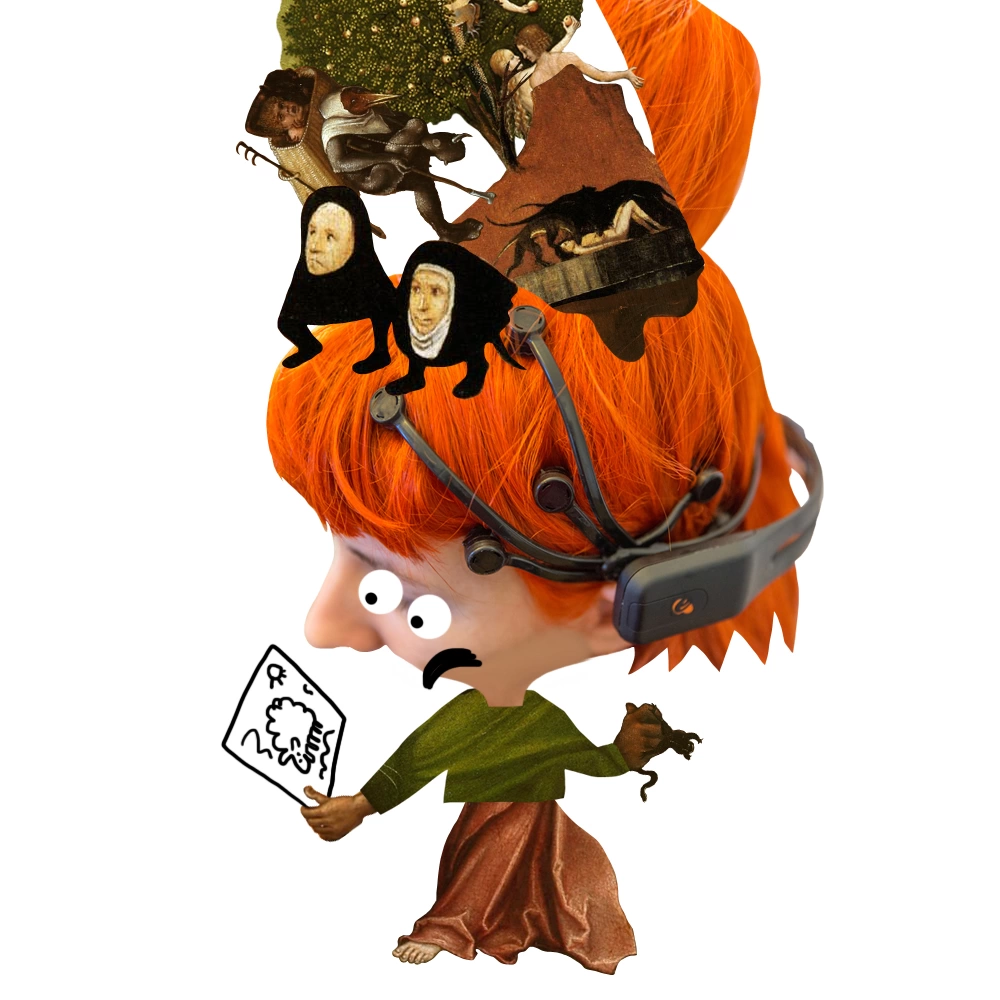
With this superficial superstition I entered the office where Ana Iorga, founder of BuyerBrain, has been conducting research projects in neuromarketing for several years now. This is where she studies the response of consumers to various stimuli – packages, ads slogans, the placement of products in a shop etc. She doesn’t just ask people what they felt about, for example, that particular brand of chocolate, but she directly analyzes their cognitive or emotional responses by following their brain activity. One of the commercial projects Ana, PhD student at the Academy of Economic Studies, is working on right now is Virtual Shopper Journey, a research tool which uses virtual reality technologies for better understanding how people behave in a supermarket and, consequently, how they could be more efficiently convinced to buy. The sole thought that, in the future, the art of selling will insinuate itself in my brain can only frighten me, but during that experiment I calmed down so that I won’t spoil my aesthetic experience. What if the soft will all of a sudden detect a high degree of panic, while I was watching some still life oil painting?
In case anyone would wonder, my little experiment for which Ana made time before leaving for a conference in Dubai on the future of neuromarketing, was strictly conducted for journalistic purposes and doesn’t have any scientific stake. For this latter aim we would need a relevant sample and an elaborate methodology. I wanted to see how some of my brain’s responses to seeing works of art look like when a machine draws them on the screen. Before all this, Ana dampened the electrodes of the encephalographic headset in saline solution, for better conductivity. “The EEG headset has 14 electrodes which gather data about the electrical activity of some neurons located on the cerebral hemisphere right to the surface, under the cranial bone, and about cerebral rhythms. This is how we could interpret if an individual develops a positive reaction towards the message or if he rejects it”, Ana explained, while trying to set up the headset on my head. “In a very simplistic manner, the theory states that when you have a positive reaction, brain activity intensifies in the left hemisphere (which has an important role in language and logical capacity), and the reaction of disapproval activates the right hemisphere (important in spatial orientation and visual processing).”
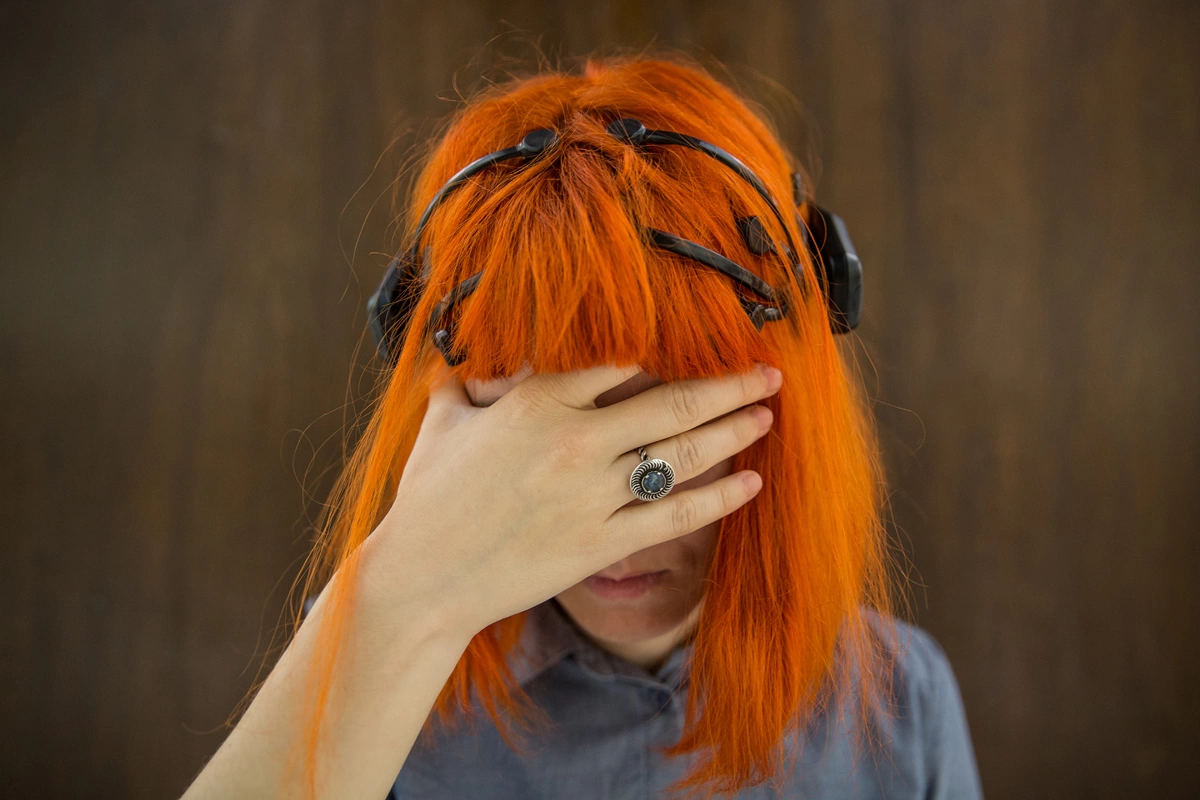
Once all the electrodes were in their places and started sending signals, the lines of the graphic started dancing on the computer screen. A laughing outbreak made them distort in acute zig-zags, while during moments of concentration they would elongate like well stretched threads. I closed my eyes in order to reach a neutral state, a benchmark for measuring the responses to the paintings that were to appear on the computer screen. In my silence bubble I kept encouraging my brain: I childishly told him to be as cooperative as he can, as if he was a pet whose training must make a good impression. Enough with all this non-sense: concentration. Immediately after, hyper-realistic landscapes, abstract scenes, blurred portraits, propagandistic homages and dream-like compositions started coloring my visual field. Each and every one of them was displayed on the screen for six seconds. This is the necessary time for us to form a reaction of curiosity or rejection towards visual stimuli. My view was scanning in complete silence every painting displayed on fast forward, following as it wished the points of light or the shape that stimulated its curiosity. I didn’t have time to judge them, as I would do in a museum, I could only watch and react. And to laugh out loud when the screen got blue and in the middle an Avatar like woman appeared holding a red rose in her mouth that was about to touch her icy nipple. After that, three chunky creatures appeared, looking like some sort of sphinxes with the faces of seals and the legs of lions. All these were Sabin Balasa’s works. God damn, what if the soft will interpret my laugh as a proof of supreme appreciation?
To be or not to be moved
I found the first clues showing what happens in the brain when we are exposed to art works, especially to paintings, in Semir Zeki’s studies, a British neurologist who, after studying the visual processes in the brains of primates, defined for the first time neuroaesthetics in the beginning of the 2000’s. This is the domain that tries to inquire into what happens at an emotional level when we listen to music for example or when we are in front of a painting. In the long history of art, the way in which people perceive it was only the subject of marginal debates – good paintings elevate the soul, works of art depict ‘higher’ truths that can’t be identified at the mundane level, classical music is a tool for purifying the soul, etc. Neurosciences insinuated themselves during the last decades on this territory of debates about how art is perceived, which completely ignore the body.
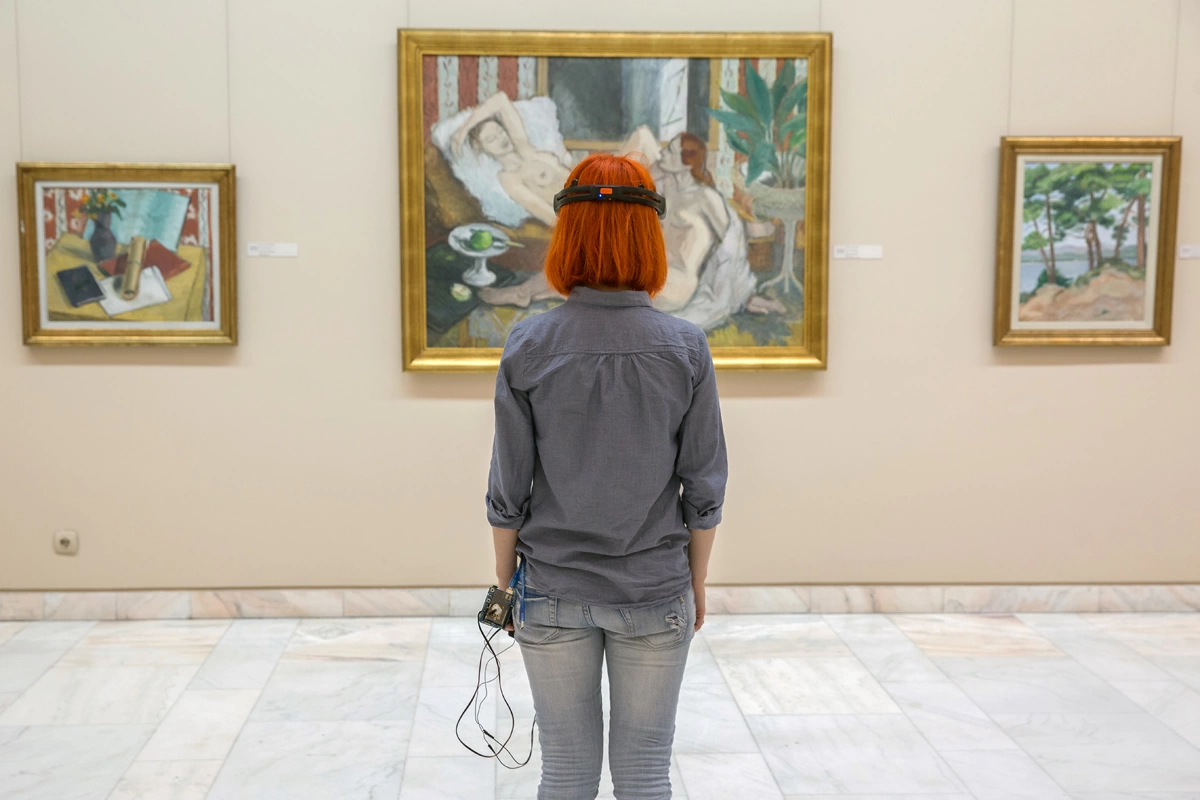
To put it shortly, when you start crying in a museum of Flemish Art or when you start laughing when seeing Sabin Balasa’s aliens, when you decipher a Picasso or analyze a Grigorescu, the ‘technical’ process taking place in the brain is basically the same, with small variations:
“Information comes in from our eyes to the occipital lobes. This information is processed in different parts of the occipital lobe, which interact with our emotions in the limbic areas. When we like what we see, the pleasure or reward centers of our limbic areas are turned on. When we think about the meaning of what we are looking at, the temporal lobes are engaged. When we draw on our personal memories and experiences in aesthetic encounters, the inside of the temporal lobe comes online. As beautiful things engage us and capture our attention and we respond to them, we activate our parietal and frontal lobes.” - Anjan Chatterjee, The Aesthetic Brain. How We Evolved to Desire Beauty and Enjoy Art
Even more, the reaction chain taking place in the brain when seeing a painting we very much like looks a lot like those we have when we are deeply moved by a landscape. “There aren’t any specific cerebral processes associated with contemplating paintings which induce us positive emotions, but it is a great thing that we can use cerebral measurements and those connected to the peripheral nervous system (which show what different nerves, like those connected with the skin or the heart, do) in order to see if paintings really do provoke emotions”, explained on Skype Andre C. Miu, founder of the NeuroCognitive Sciences Lab in Cluj-Napoca. Even though these explanations might seem useless for an art lover who could offer various stories or explanations about the way art elevates our spirit, when we do and talk science everything must be proven. It doesn’t suffice anymore for people to trust my words when I’m saying that in front of Victor Brauner’s paintings I felt a great joy; these emotions can be proven by clear measurements – of the reactions in the brain or ton he skin’s surface, the cardiac rhythm and so on.
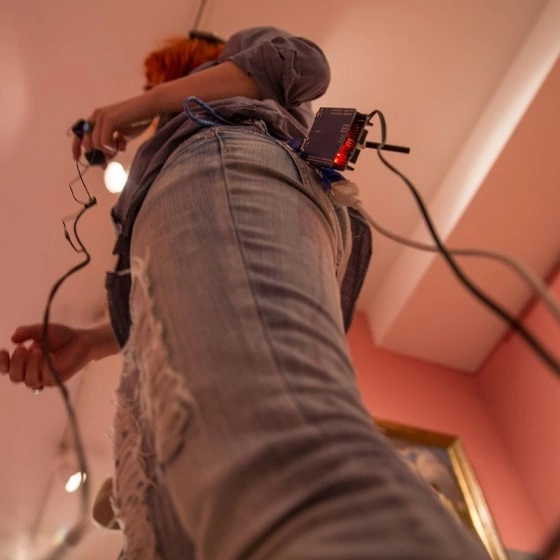
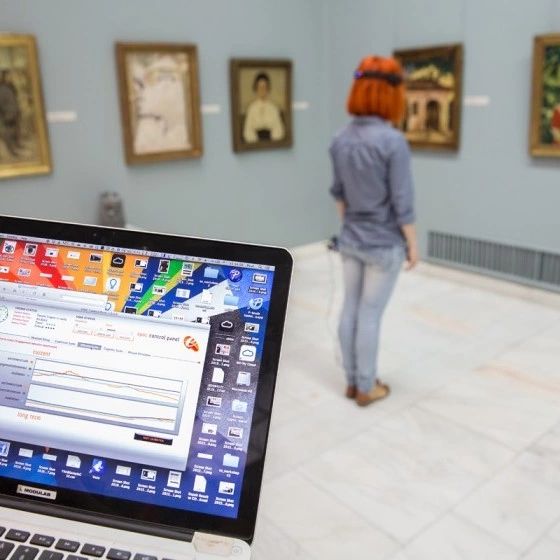
“There is a whole debate between emotivists and cognitivists” explained Miu who is teaching neurocognitive sciences and behavioral genetics at the Babes-Bolyai University. “The emotivists believe that we have real emotional responses to paintings and music, the same kind as when we are confronted to stimuli with personal relevance to us or to stimuli that show that nearby there is a potential danger or reward. Cognitivists, on the other hand, stress that we can’t have emotions in regard to symbolic stimuli because it all comes down to simple cognitive processes like attention to new stimuli or cognitive appreciation for form or color. Neurocognitive and psychophysiology studies have proven that the processes that go on in the brain when we look at paintings or listen to music are akin to those that arise when we look at our mother’s or lover’s face. This also applies when a movie makes us sad or afraid. These are real emotional responses and this means that there is activity in a cerebral circuit that connects various nervous structures in the brain, like the amygdala, the hippocampus or other prefrontal regions associated with the control of emotions” says Miu who, at the beginning of the year published along two other Romanian researchers a comparative study about the emotions provoked by painting and music.
Higher amazement frequencies
For Aesthetic Emotions Across Arts: A Comparison Between Painting and Music, the three Romanian researchers didn’t take measurements at the brain, heart and skin level, but they realized a questionnaire through which approximatively one thousand persons evaluated their emotions when confronted with paintings or music. They employed the Geneva Emotional Music Scale “the only standardized instrument which covers the whole spectrum of emotions generated by works of art”, the positive (like amazement), as well as the negative ones (nostalgia or sadness). After analyzing the data, they noticed that “the emotions associated with painting were perceived as less alike to those which emerge in everyday situations, unlike those connected to music” showed the study published by Andrei C. Miu, Simina Pițur and Aurora Szentagotai-Tătar. “This perception can be correlated with higher frequencies of amazement associated with contemplating paintings, because this emotion emerges in more limited contexts that create the impression we are in the presence of entities of a higher nature than ourselves.”
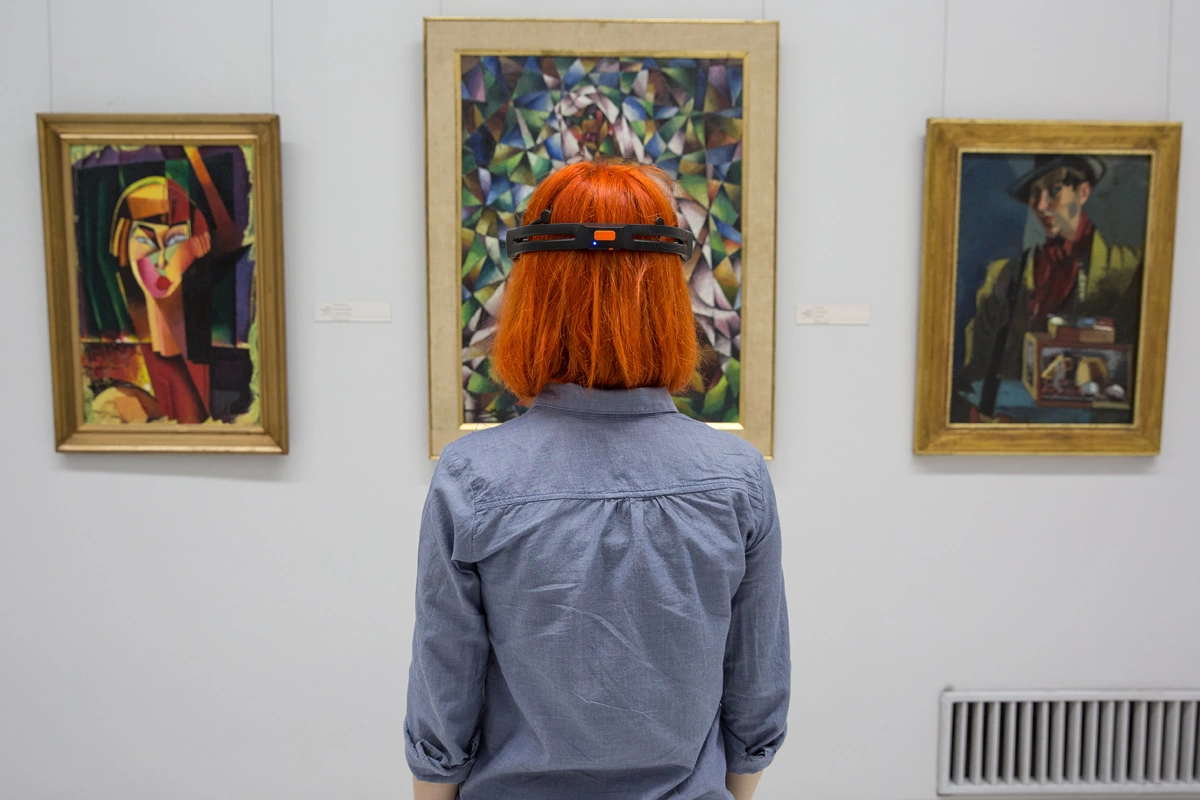
“We discovered that those who described their experiences of contemplating paintings were declaring higher frequencies of amazement than those who described their experiences of listening to music [F(1, 525.29) = 28.49, p < 0.001, η2P = 0.03]. Moreover, the frequencies of tenderness [F(1, 434.56) = 33.86, p < 0.001, η2P = 0.04], of nostalgia [F(1, 419.57) = 30.09, p< 0.001, η2P = 0.03], of being in a peaceful state [F(1, 438.95) = 35.83, p < 0.001, η2P = 0.04], of power [F(1, 447.32) = 89.75,p < 0.001, η2P = 0.09], of joyfulness [F(1, 410.84) = 151.69, p < 0.001, η2P = 0.15], and sadness [F(1, 501.01) = 43.55, p < 0.001, η2P = 0.04] were more elevated in connection to those who were listening to music. The frequencies of transcendence and tension were the same in both cases.”
I can’t exactly say what emotion I dived into when I was in front of The Last Judgment. I might have as well flirted with tenderness when seeing Adam and Eve so pale under the tree of knowledge, I could have been terrified when looking at the devils who were stuffing people into a soul-grinding machine, or I could have felt in peace when I let my view rest on the painted skies, where angels and saints were working at the equation of universal equilibrium. Without doubt, when I saw Bosch’s triptych which came out of his studio shortly after Gutenberg’s press started changing the wold, I had the passing by sensation that I am “in the presence of entities of higher nature than myself.” There is no contradiction between the zen and the horror that the same painting provoked in me. “Any stimuli can provoke simultaneous emotions” Miu explained. “It can induce what psychologists call basic emotions connected to paintings – fear, disgust, sadness and so on – but in the same time one can also experience aesthetic emotions for the form of the strong, harmonious artistic language employed, like admiration for how realistic and technical the work is and the amazing spatial resolution in which the artist depicted the details”.
Even if there are no scientific studies which prove that the artistic expertise is involved in the emotional response to paintings “experimental data suggest that offering supplementary information that facilitates the understanding of a painting does not influence the preference for some specific paintings”, I later found out from Miu’s and his colleagues’ research. Even if, in the respondents’ opinion and education matter more when in front of a painting (at least in comparison with listening to music), it seems that it isn’t necessary to read art history books or analyzes about Van Gogh’s subtleties in order to be moved in front of his shaky fields of sunflowers or when seeing the colorful sky in Starry Night. Moreover, James Elkins, the art historian who played the detective in regard with the paintings that make us cry, militates against infobesity concerning works of art. “Any fact (known before) is a shield against a direct experience. Whoever read the explicative information in museums or has read books about art is less likely to be moved by what he sees.”

Artists, the first neuro-researchers
Samir Zeki’s theories about the way paintings transmit emotions suggest the sharing of some kind of universal language which doesn’t take into account specific cultural details. In his book, Inner Vision: An Exploration of Art and the Brain, Zeki stresses that art’s function is very much alike to the brain’s function - “to represent the constant, perennial, essential and persistent traits of objects, faces, situations and so on”. Art is a way of obtaining knowledge about the world and of looking for universality and constancy in an ever-changing world.
“Some believe that art has a social function or a psychological one, that it is a mirror of society that should anticipate and lead to changes at the societal level. I will not contest even one of these functions […]. But I hope that many of those belonging to the art world will be receptive about the neurobiological vision I propose, stressing that art, in general, has a remarkably similar function with that of the visual brain, that it is truly it’s extension and that, in exercising its functions, art follows the rules of the visual brain.”
Moreover, in Zeki’s opinion, artists are the first ‘researchers’ in neurosciences, managing to provoke complex processes in the brain through their works. When they use the rules of proportion, color, form or contrast, visual artists create things that other people, and implicitly other brains, get to like. Which means that “artists understood general rules about the neuronal organization of visual circuits which give birth to pleasure, without knowing scientific details about neuronal organization or even about its’ existence”, stresses the neurologists who opened new ways of analyzing our relationship with art.
Even if these are theories I really embrace, preferring anytime to visit a museum with a kid than with a master of critique, I still have doubts about the relationship with abstract and radical conceptual art. Last summer I took a tree to be a tree and not an artwork as it was intended. In 2011, the cleaning lady of a museum in Dortmund mistook the installation When it starts dripping from the ceiling of the much appreciated sculptor Martin Kippenberger for a bothersome improvisation. So she started cleaning the plastic container where the artist struggled to paint ‘dried raindrops’. The woman’s intervention on the work estimated at 800.000 euros comes from a long tradition of such confusions starting in 1986 when the cleaning personnel of the Academy of Plastic Arts in Düsseldorf cleaned from the gallery a grease stain, worth a couple hundred thousands euros, belonging to the artist Joseph Beuys. In such ambiguous cases it is very likely that a big amount of sophisticated art references would help us decode a work of art, but for the moment there aren’t any studies concerning the aesthetic emotions provoked by abstract painting, in comparison with the ones provoked by figurative works.
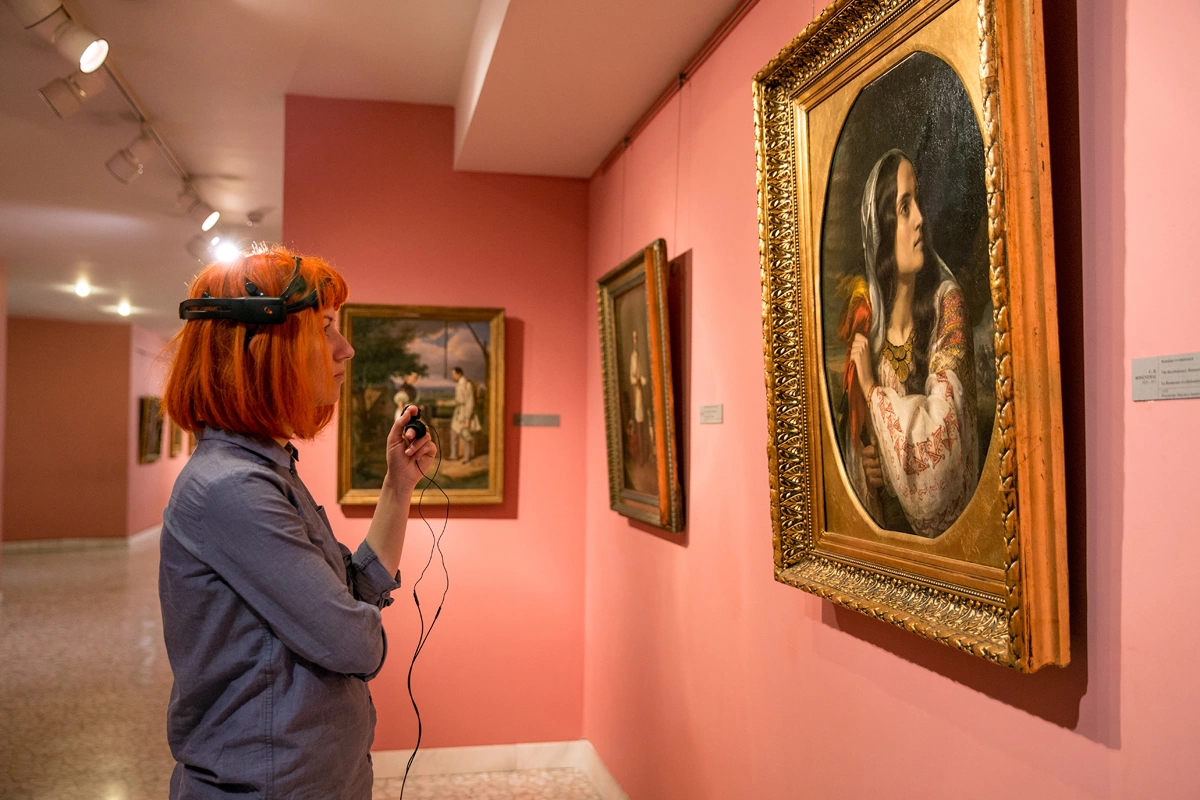
When contemplation is whispered in your headset
I tried to understand on my own skin how do the brain responses differ when I recognize the shapes painted on a canvas and when I have in front a painting looking like an abstract puzzle. How do neurons ‘light up’ when seeing Tonitza’s Forester’s Daughter, or when deciphering Max Herman Maxy’s The nude of veil. So, on a sunny day I went for a stroll through Cismigiu, towards The National Romanian Museum of Art (MNAR), where I was to repeat the encephalographic experiment in front of original paintings. On my way I realized, in a caricaturist manner, I started again to behave nicely with my brain: when I was waiting at the traffic light I was amazed by what a good job it does in sorting out the continuous torrent of honks and noises and once I got into the park I sat on a bench in order to offer my brain a well-deserved moment of respite. The birds were chirping, kids were skating at Eminescu’s spring and the grannies were caressing their freshly arranged poodles - what more idyllic gift could a brain wish for in the middle of Bucharest?
This time, I conducted the experiment with Ioana Calen and Paul Popescu from Modulab, who installed on my head a headset similar to the one from BuyerBrain. Even though I settled with those from MNAR a list of paintings before the experiment, I went about them randomly so that I couldn’t know in advance what would follow. This was the only way of avoiding influencing the results with my expectations. Even though I soon realized the results could be influenced by many other factors like: the enthusiasm of the experience of walking blindfolded in an art museum, the discussions of other visitors that happened to be in the same room, the stress that the laptop’s battery to which the headset was connected will run out, and many others that I haven’t yet realized.
This is how, after I really forced myself to concentrate and I opened my eyes in front of the first painting, the graphics on the screen started buzzing wildly. Never has Revolutionary Romania, Constantin Daniel Rosenthal’s famous painting, provoke such a strong feeling in me. Not even after I found out that Maria Rosetti, meaning the English lady Marie Grant, the first Romanian journalist, posed for Rosenthal as a symbol of a convoluted country. On the other hand, when in front of the light slides that fall on the silhouettes of Victor Brauner’s Passivité courtoise the activity recorded by the EEG headset didn’t record anything out of the ordinary, as I was expecting with naivety.
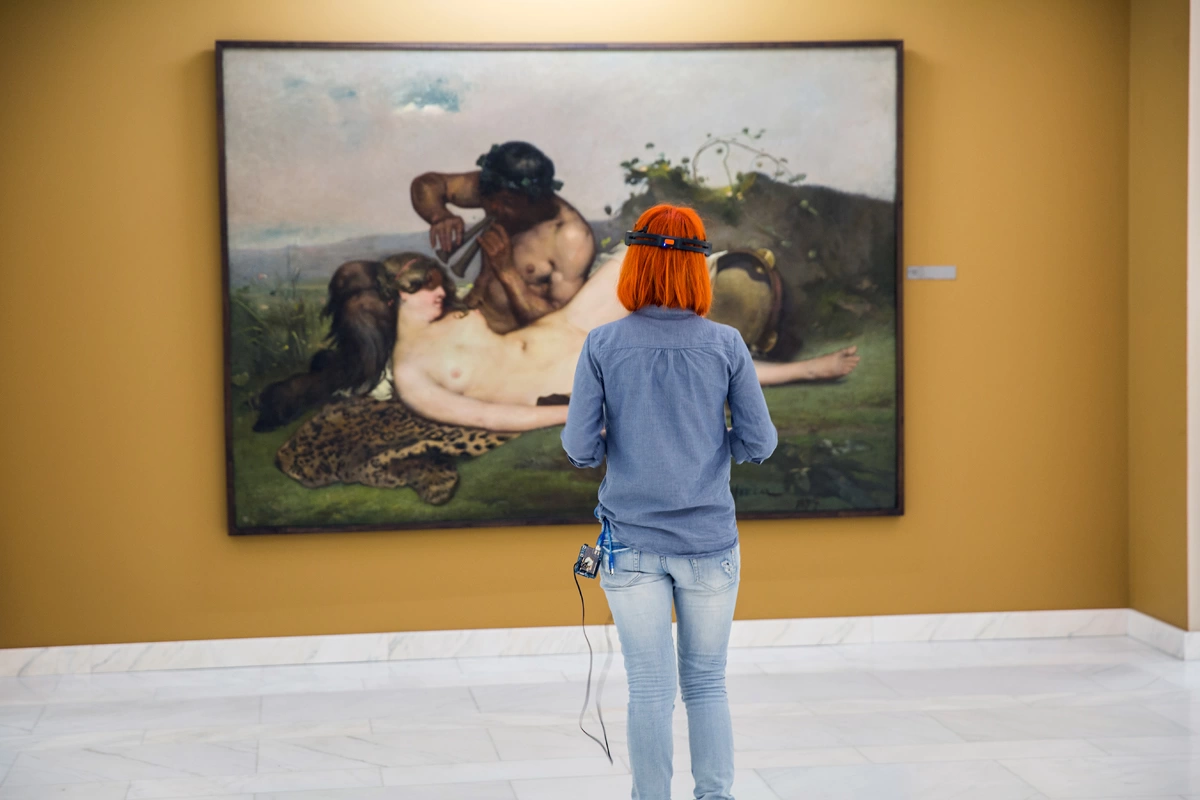
Not even Arthur Segals’s Landscape in colors or the green peace in Grigorescu’s Mountain Road couldn’t rival the view of a naked woman laying on a jaguar’s fur (?), in the arms of a satire with an athletic abdomen and a poetic soul. George Demetrescu Mirea’s Bacanta, a painter I have never heard of until then (although I found out he painted many famous walls at Casa Vernescu, the National Bank etc.), translated into an ‘explosion’ of the graphics which until then were lazily moving on the screen. And this might be due to the fact that after so many sessions of contemplation on serious or neuter themes, I landed in an improbable intimacy in which the unknowingly satire was slowly falling into a comforting kitsch. All of a sudden, the idea that us, as a species, end up producing such artifacts that afterwards we quietly and solemnly admire in museums seemed so funny that I started laughing in front of Bacanta as if I were assisting to a comedy.
The art that slows down your heartbeats
I couldn’t interpret the results of the improvised experiment because in a gallery the aesthetic experience comes in a bundle of many factors. “In a lab, you can’t expect seeing stimuli that produce pleasure and you cannot share the aesthetic experience with other people, whereas in a museum you go with these particular expectations and the natural context contributes to the diversity of emotions you are experiencing”, explained Andrei C. Miu later, in whose research I found other studies that show how important and variable is the context in which we expose ourselves to artistic experiences. “Experimental and field studies showed that the presence of a romantic partner or of a close friend during music auditions raises the frequency of some affective states like those of happiness-exaltation, pleasure-joy, admiration-veneration. […] One study suggested that social encounters in art galleries could damage the aesthetic experience by inducing competition between social consciousness and the enjoyment of paintings in themselves.”
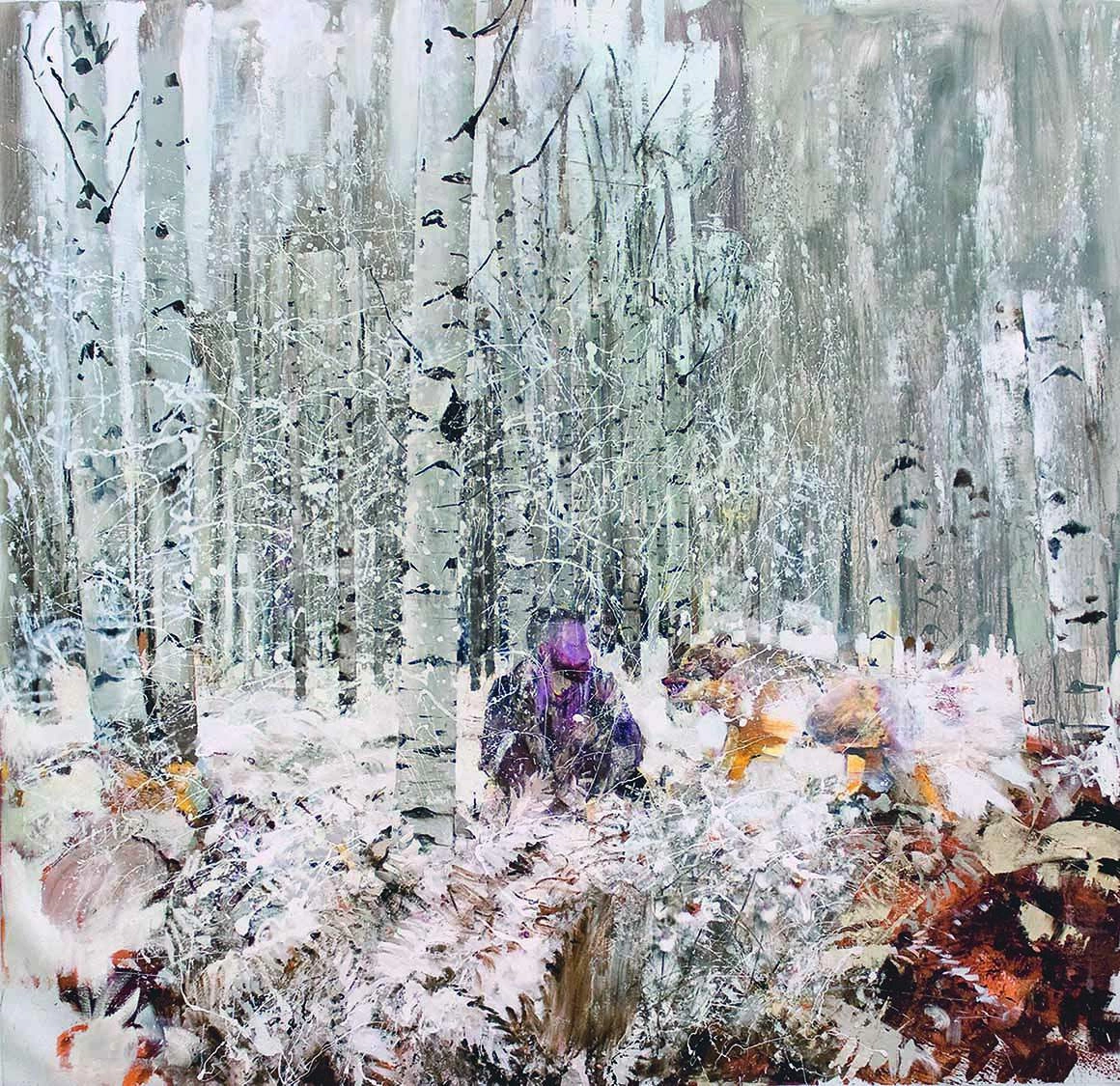
Shortly after the visit at the museum I received the results from BuyerBrain: “you liked the most this painting” Ana Iorga was writing indicating to Adrian Ghenie’s Persian Miniature. And this came out from the intensification of the activity in the frontal cortex. “Simplistically speaking, when you develop a positive reaction of attraction towards a stimulus you have a stronger activity in the left hemisphere and when you develop a negative reaction of rejection towards the message you are seeing, you have a stronger activity in the right hemisphere. We follow the activity in the frontal right and left hemispheres and the modification of alpha waves which dominate during moments of relaxation and the beta waves dominating during moments of concentration on a certain cognitive activity” Ana told me. In her opinion, the attraction towards Ghenie’s painting could be explained by the high number of unclear elements that must be decoded and which stimulated a high cognitive interest on my behalf. I don’t know if the work of detective or the memory of the first time I saw live this painting, covering a whole wall with the colorful tension between man and nature, played a role. I remained many minutes in front of the canvas displayed in Darwin’s Room, at the Romanian Pavilion from Venice Art Biennale, minutes that, most probably, were enough for a connection to form in a deep corner of my mind.
If while watching the Persan Mininature someone would have made peripheral measurement which reflect the influence of nerves on some organs like the heart or the skin, they would certainly have obtained information about the emotions I was experiencing. “These things can be seen, for example, at the skin level with sensors that detect levels of sympathetic activity”, Andrei C. Miu suggested. “if, while watching the paintings you like, someone would have measured the electric conductance of your skin, we would have seen that it grows while watching that particular works and it drops when you watch paintings you don't like”. On the other hand, if the activity of my heart would have been recorded with an EEG, a slight drop of the cardiac frequency would have been observed after the first 1-2 seconds of watching the painting. “The cardiac frequency reflects the emotional response to a stimulus, being elevated for the unpleasant ones.” In other words, still nature with a towel would have had all the chances to accelerate my heartbeats.
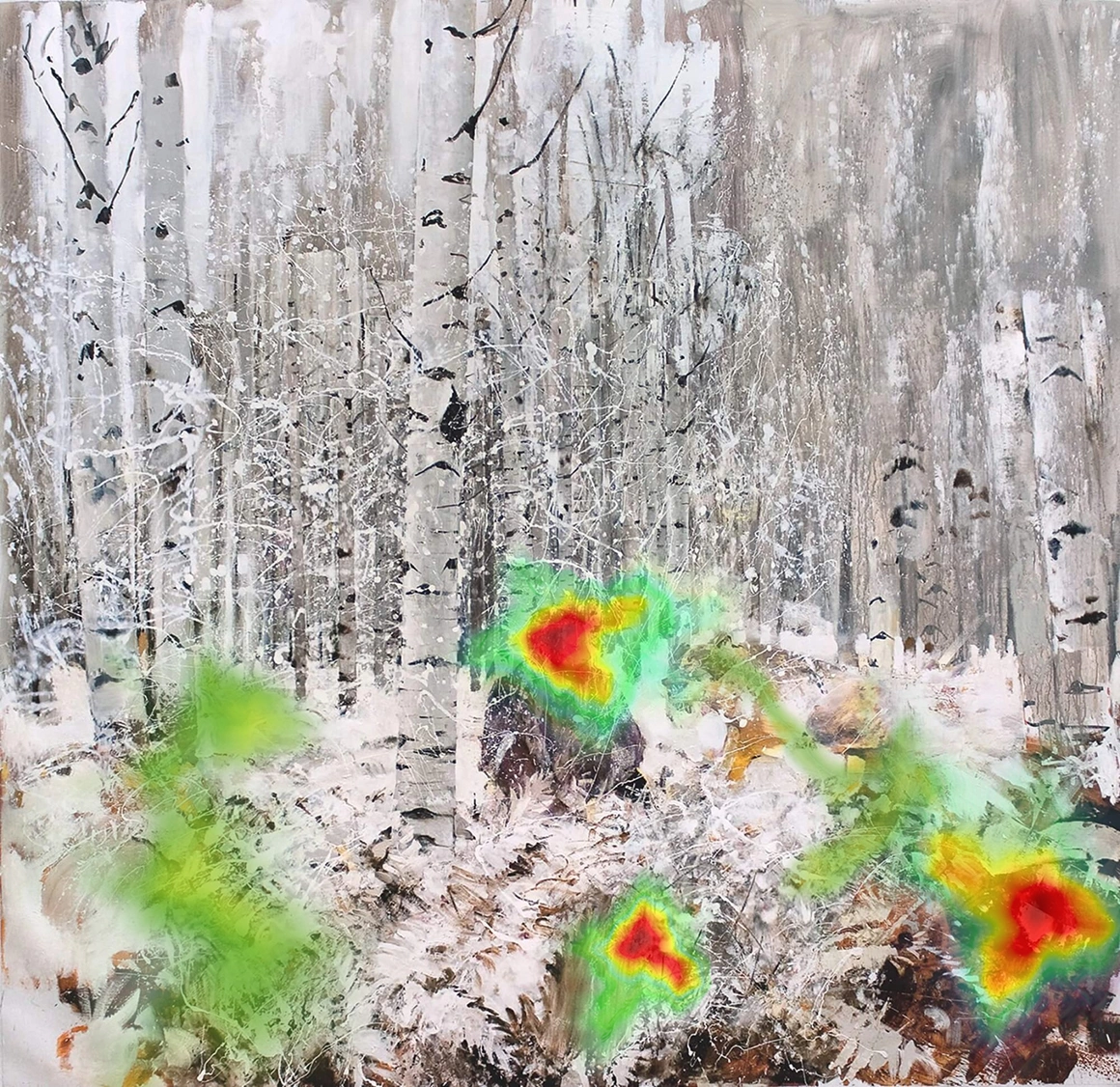
Artificial intelligence is looking for the art in the ‘Ox Cart’
Even if science started dissecting, for the moment just superficially, the relationship we have with painting and art in general, remains a very personal one. At a first view, many of us who intersect our paths, strangers in the museums of the world, have the tendency of watching a painting starting from the same points. For example, if we exclude art specialists, most of us watch first and foremost Monalisa’s face and very few start from other elements. A study which used technologies based on eye tracking shows that there are without doubt some common principles after which people guide themselves while watching a painting. Despite this, the study shows that “there is a great variability, determined by the subjects’ different interests, artistic tastes and knowledge. This variability from subject to subject makes the scientific study of art extremely difficult.”
Confronted with the challenge of so many variables one could start by searching for some objective benchmarks with the aid of artificial intelligence. At the Faculty of Electronics, Telecommunications and the Technology of Information, within the Polytechnic University of Bucharest, a computer is trying to learn art movements. This is going on within the Pandora: Description of a Painting Database for Art Movement Recognition with Baselines and Perspectives project. One day when the spring in Bucharest was rivaling Boticelli’s La primavera, with the exception of pollution and crowding, I talked to Corneliu Florea, researcher at the Processing and Analysis of Image Lab, where Pandora is undergoing. “I thought it was interesting to try to understand what makes something an artistic movement” Conerliu translated for me, in the mortals’ language, how he embarked in the process of bridging visual art and machine learning. “If, for example, I am not capable of understanding art, can I train a machine that could tell me that a certain painting belongs to a certain artistic movement?”
The first step was setting up a database with works of art belonging to 12 artistic movements, from the byzantine period to pop art. When we met, Iuliana Dumitru, from the Center of Excellency in Image Studies, was finishing verifying almost 17.000 images, while being careful that each and every one of them be framed in the right art movement. Unlike a computer Iuliana started, while documenting, to dream about these images. “In the attempt of describing images one could use multiple descriptors, like those of color, texture and so on. Practically”, Corneliu explained, “we look at art history to see how a current is defined, what categories of descriptors would make sense we use and then we describe the image using the same descriptors that we introduce in a system of artificial learning that afterwards starts to make correlations.”
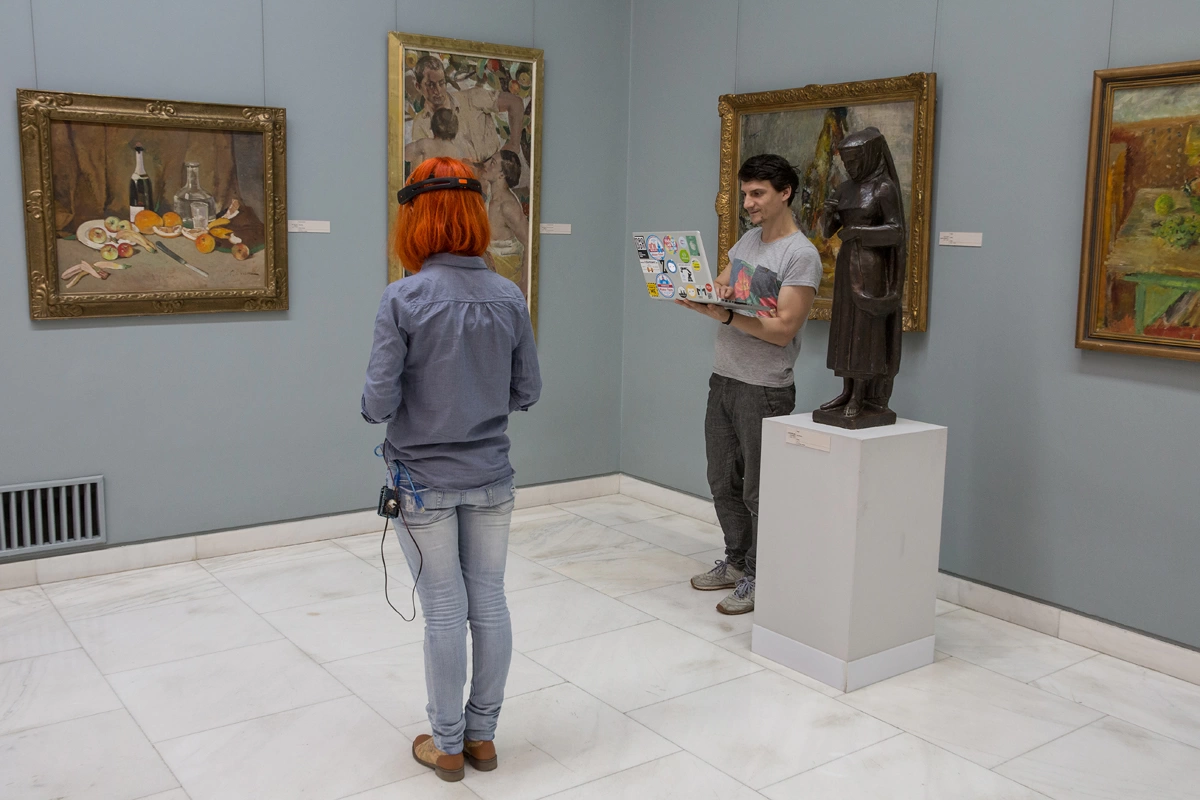
One of the essential parts of such a mission is ‘training’ the machine so that it can find the most suitable solution for recognizing art movements. According to Florea, lately, the best results are obtained by the so-called deep neuronal networks. When I visited the team of researchers in their lab at the Polytechnic University, there was a common looking computer, apparently turned off, that was sitting in a corner silently training for a similar medical project of image analysis. Nothing resembled the twist and turn of cables and blinking of leds that I was associating, after too many SF movies, with the ‘efforts’ of learning of artificial intelligence. Even though a week before a Google robot had defeated a Go champion for the first time in the 2.500 years of the game’s history, for the moment the results of artificial intelligence in recognizing images was lagging behind the capabilities human beings possess. This is exactly why training a machine in order to distinguish impressionism from expressionism is not an easy task.
The next step for Pandora, after the computer will better learn artistic movements, will be to follow the neurologist Semir Zeki’s hypotheses according to which painting works like an universal language. The machine will next process a database of paintings belonging to Romanian artists. “I am curious about what the machines have to say about Romanian art”, Florea said “I’d like to take the ‘Ox Cart’ by Grigorescu and ask the machine to show me from the 17.000 universal paintings fed into it elements that might be relevant for identifying the painting’s style or even other similar paintings. This process might reveal things already known by art experts but it is also possible to discover things that up until now were not observed”. Simultaneously, the researchers from the Faculty of Electronics want to also test through eye tracking what are the points from various paintings that attract the attention of the viewer before he correlates the observations with every specific artistic movement.
***
While the Pandora machine is training in visual arts in order to be capable to orient itself in what human beings can distinguish with little exercise and the researchers in neurosciences continue to decipher, little by little, the complicated domino effect that art unravels in the brain, a software just finished painting “a new Rembrandt”. After two years in which it analyzed 168.263 fragments from the painter’s works, the computer 3D printed an à la Rembrandt the identikit of a protagonist in a painting of 148 million pixels. With the first occasion I visit Amsterdam, I will go and see what kind of emotions the artist of the future, the robot, provokes in me.
Meanwhile, I propose you to enter, on your way to work or home, an art museum, be it one with a rich collection or a phantom forgotten by all the inhabitants of the city. If this is not possible, take an expedition through the Garden of worldly pleasures imagined by Bosch hundreds of years ago and reanimated in an insane zoom by the technologies of 2000+.
